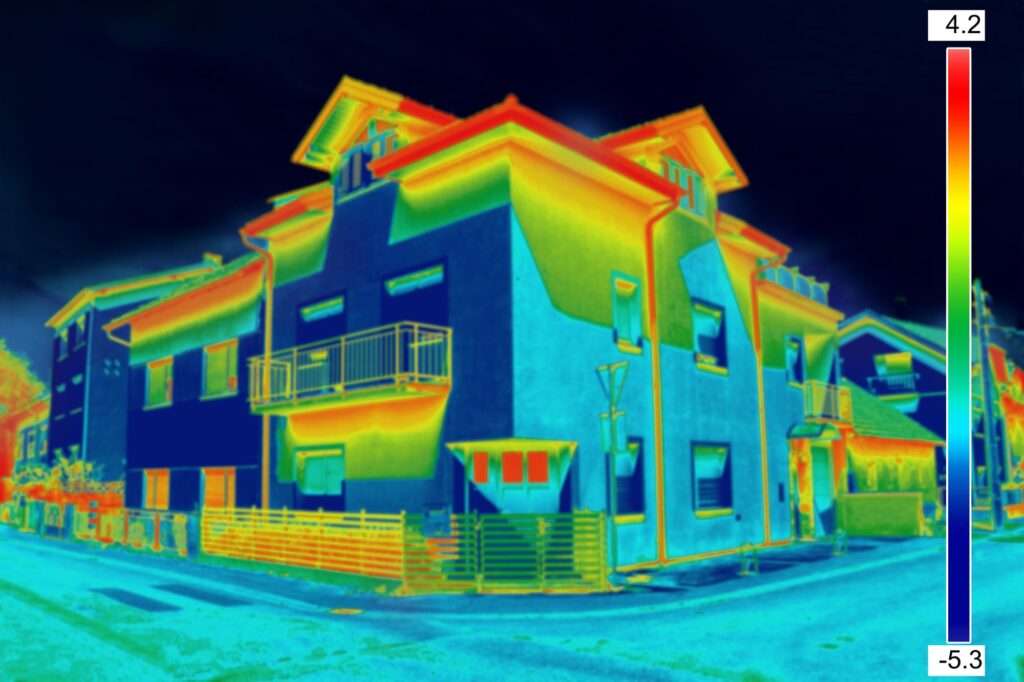When it comes to home inspections, thoroughness is key to ensuring that you’re making a sound investment. While visual inspections are essential, there’s an advanced technology that can unveil hidden issues – infrared imaging. In this blog post, we’ll explore why using infrared during a home inspection is crucial for identifying problems that might otherwise remain concealed.
1. Detecting Hidden Moisture
One of the primary advantages of infrared imaging in home inspections is its ability to detect hidden moisture. Water damage can lead to rot, mold growth, and structural issues. Infrared cameras can identify temperature differences on surfaces, highlighting areas where moisture is present even if it’s not visible to the naked eye.
2. Locating Electrical Issues
Infrared imaging can be a lifesaver when it comes to electrical inspections. Faulty wiring, overloaded circuits, or loose connections can lead to electrical fires. Infrared cameras can identify hotspots in the electrical system, allowing inspectors to spot potential hazards before they become critical.
3. Uncovering Insulation Problems
Inadequate or damaged insulation can result in energy loss and discomfort in your home. Infrared technology can identify areas with poor insulation, helping homeowners make improvements for better energy efficiency and comfort.
4. Identifying HVAC Issues
Your heating, ventilation, and air conditioning (HVAC) system plays a vital role in your home’s comfort. Infrared imaging can detect irregularities in HVAC components, such as clogged ducts, malfunctioning heating elements, or blocked vents, ensuring that your system operates efficiently.
5. Revealing Roof Leaks
Leaky roofs can lead to extensive water damage and costly repairs. Infrared cameras can identify temperature variations on the ceiling, revealing potential roof leaks that may not be evident in a visual inspection.
6. Unmasking Plumbing Leaks
Plumbing leaks are notorious for going unnoticed until they cause significant damage. Infrared technology can pinpoint hidden leaks behind walls or under floors by detecting changes in temperature caused by the escaping water.
7. Enhanced Energy Efficiency
Using infrared during a home inspection can help homeowners identify areas where energy is escaping. By sealing leaks and improving insulation, homeowners can increase energy efficiency, reduce utility bills, and make their homes more environmentally friendly.
8. Peace of Mind for Buyers and Sellers
For both buyers and sellers, an infrared home inspection offers peace of mind. Buyers can make informed decisions based on comprehensive assessments, while sellers can address issues proactively, potentially increasing the value of their property.
9. Preventive Maintenance
Infrared imaging can serve as a valuable tool for preventive maintenance. By identifying potential issues early, homeowners can take proactive steps to address them before they become major, expensive problems.
Conclusion
Infrared imaging is a game-changer in the world of home inspections. It allows inspectors to uncover hidden issues, from moisture and electrical problems to insulation deficiencies and HVAC inefficiencies. Whether you’re buying a new home or want to ensure your current one is in top condition, investing in an infrared home inspection can save you money, provide peace of mind, and help you maintain a safe, comfortable, and energy-efficient living environment. It’s a technology that shines a light on the unseen, ensuring that your investment in your home is a wise one.

